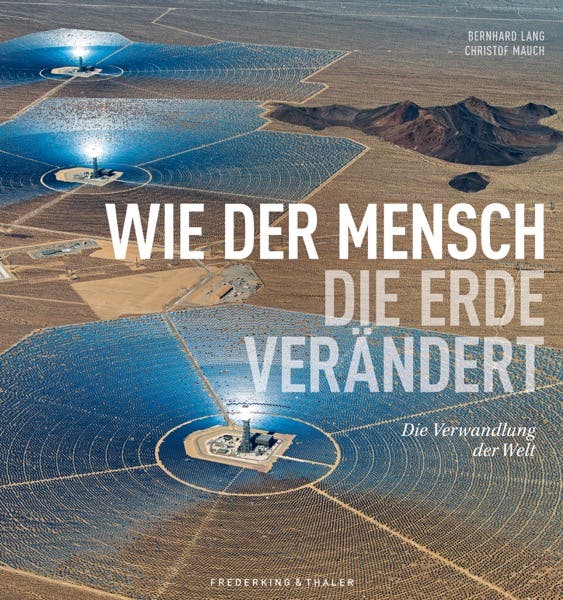When Bernhard Lang travels on a sports plane, he always holds his camera vertically down. He does not use drones, but he wants to see the face of the Earth with his own eyes from a height of 3,000 meters. He photographs its surface as it was designed by humans. Or rather destroyed. The pristine nature and beauty of pristine landscapes cannot be found in this book. Since the photographer also sees himself as an artist, the brutal destruction appears in artistic shots full of colors, symmetry and shapes. Maybe an alien will see the beauty of the footage in it. But some readers love the monotonous mirrored surfaces of the solar parks, the countless rectangular shipping containers lined up in rows, the shimmering blue-green toxic sewage treatment tanks, the Ludwigshafen chemical plant, and the deep blue Copper Lake in the Copper Bottom. An open pit mine or even the huge dark red tulip fields in the Netherlands might be scary – because of the extent to which humans have clearly changed the world in the meantime.
Christoph Mauch, director of the Rachel Carson Center for Environment and Society and professor of American cultural history at Munich, complements the stories award-winning photographer and artist Bernhard Lange tells with his photographs with informative texts. “Who are we? Where did we come from? What did people do with a planet whose biosphere is a thousand times older than the human race?” Mauch asks at the beginning of the book. By combining a photographic point of view with scientific explanation, the authors want to give readers a new perspective and convey visual understanding. Ecologist Mauch reports on the Anthropocene, on the feeding and fattening areas of the so-called Wild West or on the plastic worlds being created in Spain for the strawberry crop and provides information on the Hambach coal mine, the ship-breaking yards, the burning slums of Manila, and mining. Toxic to oil shale in Estonia.
The appearance of the poems is deceiving
Are these beautiful, truly artistic aerial photographs of a devastated world? Maybe this is not the right question. The book opens up a look at the bigger picture and reminds us that we shouldn't just look at our little flower garden with the bumblebees in the insect house from the hardware store or the trees while walking. We must also remember that the Earth – as a whole – appears devastated. “open your eyes!” This book calls. As the authors themselves note, there are already other similar picture books. But their special blend of research and learning works excellently – also thanks to Christoph Mauch's well-written and technically sound texts.

“Explorer. Communicator. Music geek. Web buff. Social media nerd. Food fanatic.”







More Stories
A fossilized creature may explain a puzzling drawing on a rock wall.
MrBeast Sued Over ‘Unsafe Environment’ on Upcoming Amazon Reality Show | US TV
Watch comets Lemmon and SWAN approach Earth today